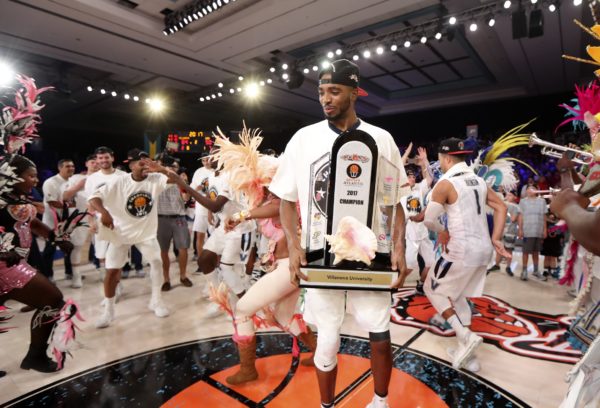Big East Notebook: Recapping Feast Week
Posted by Justin Kundrat on November 28th, 2017With a seemingly infinite number of early season tournaments this year in college basketball, Thanksgiving week becomes one of the sport’s busiest of the year. So in case you missed some of the action while you were busy with family and friends, here is a recap of several of the Big East’s key Feast Week storylines.
- Villanova hasn’t skipped a beat. This may never have been a real concern but any team that loses three starters will face some degree of uncertainty. That said, while both Purdue and Arizona were busy laying massive eggs in the Bahamas over the weekend, the Wildcats steamrolled its resulting competition to win the Battle 4 Atlantis. One reason for that is that junior Mikal Bridges continues to develop his offensive repertoire. The 6’7″ swingman, known as a highly effective defender whose limited usage masks highly efficient shooting, now takes the most shots on the team. More impressively, his effective field goal percentage is a whopping 70.6 percent this season — connecting on 50 percent of his three-point shots and demonstrating better body control when attacking the rim (66.7% 2FG). Conversely, Omari Spellman‘s freshman campaign is underway and the results to this point have been underwhelming. He is shooting just 38.5 percent at the rim and 23.1 percent from deep while accumulating a total of three points in his last two games. That shouldn’t necessarily be surprising given his relative lack of experience, but it’s worth monitoring as the team prepares for conference play.
- Seton Hall’s shooting is holding it back. While Myles Powell‘s increased playing time has helped the Pirates with floor spacing (he’s hitting 40 percent from deep), both Khadeen Carrington and Desi Rodriguez are struggling, and freshman Myles Cale simply hasn’t received enough volume yet. This means that good defensive teams will continue to pack the paint on drives and Angel Delgado post-ups in an attempt to thwart the Seton Hall offense. The Pirates posted a paltry 1.03 points per possession against both Rhode Island and Vanderbilt in last week’s NIT Season Tip-Off.
- Creighton is massively exceeding preseason expectations. It’s difficult to pinpoint what exactly is propelling Creighton’s performance thus far. Returnees Marcus Foster and Khyri Thomas are averaging a combined 35.0 PPG on the scoring front, and Thomas’ elite perimeter defense is a similarly known quantity. The question marks entering the year were point guard play and low-post scoring. On the first question, sophomore Davion Mintz has successfully avoided the turnover woes that plagued his navigation of the point guard position last season. On the second, perhaps the most surprising individual performance has come from Martin Krampelj, used sparingly last season but bursting on to the scene as an inside-out forward in the wake of Toby Hegner‘s injury. The 6’9″ forward is averaging 12.5 PPG and 7.2 RPG while serving as an important source of scoring at the rim to offset his team’s numerous perimeter threats. With wins over UCLA and Northwestern in a neutral court setting, the Bluejays are currently ranked 25th in the latest AP poll.
Quick hitters.
- Georgetown is off to a 4-0 start against a remarkably weak schedule. The team’s shooting has taken a turn for the better with freshman guard Jahvon Blair connecting on 42 percent of his threes thus far.
- St. John’s offense remains similar to last season in that it is heavily reliant on transition baskets and the penetration of Shamorie Ponds and Marcus LoVett. Despite posting one of the highest steal rates in the country (14th nationally), the Johnnies rank just 316th in two-point field goal percentage.
- Watching Marquette feels like watching an all-star game and not necessarily in a good way. The 5’11” backcourt duo of Andrew Rowsey and Markus Howard are two of the country’s best outside shooters and both will let it fly at the first hint of an opening. While it often works (they are both 40%+ from three-point range), their relative lack of size leads to substantial perimeter holes on the defensive end. The Golden Eagles have struggled mightily in both defending the post and containing penetration.











































